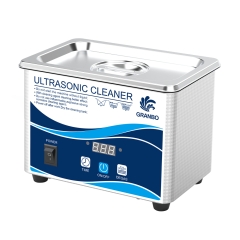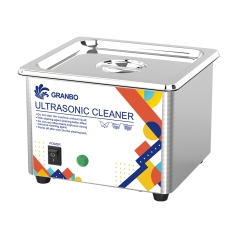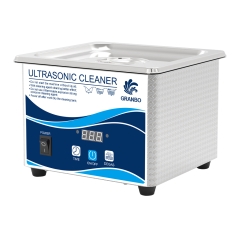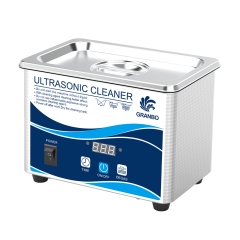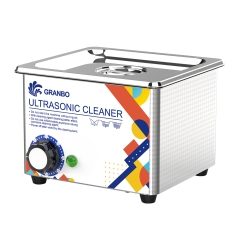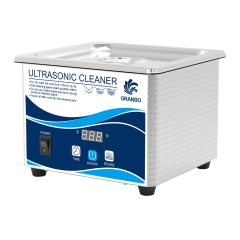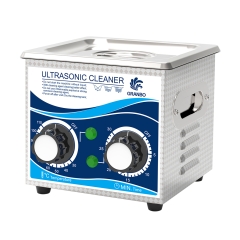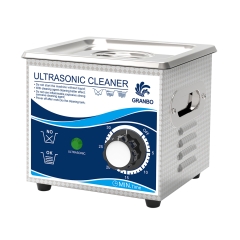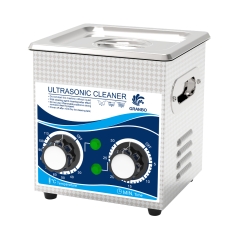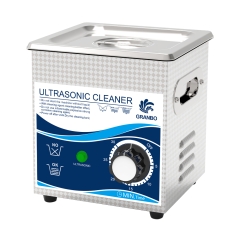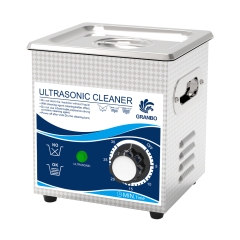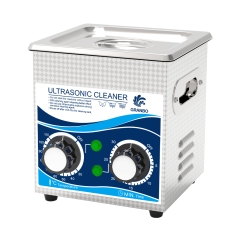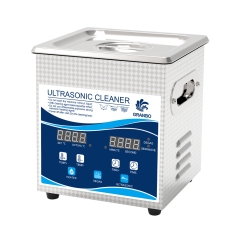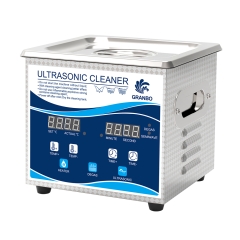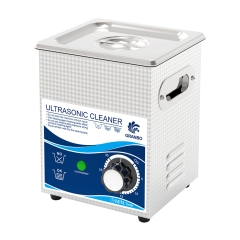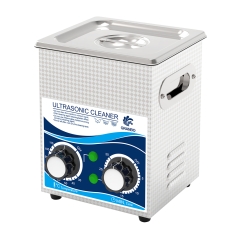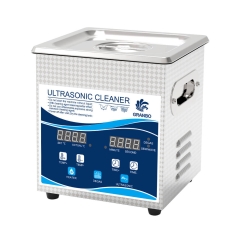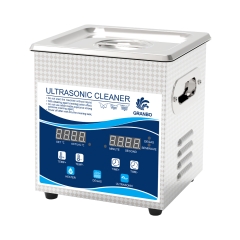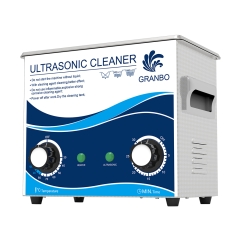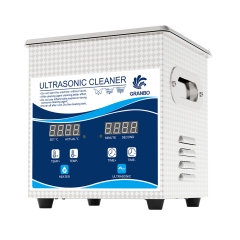3d Printing Cleaning
The Application of Ultrasonic Cleaners in 3D Printing Field
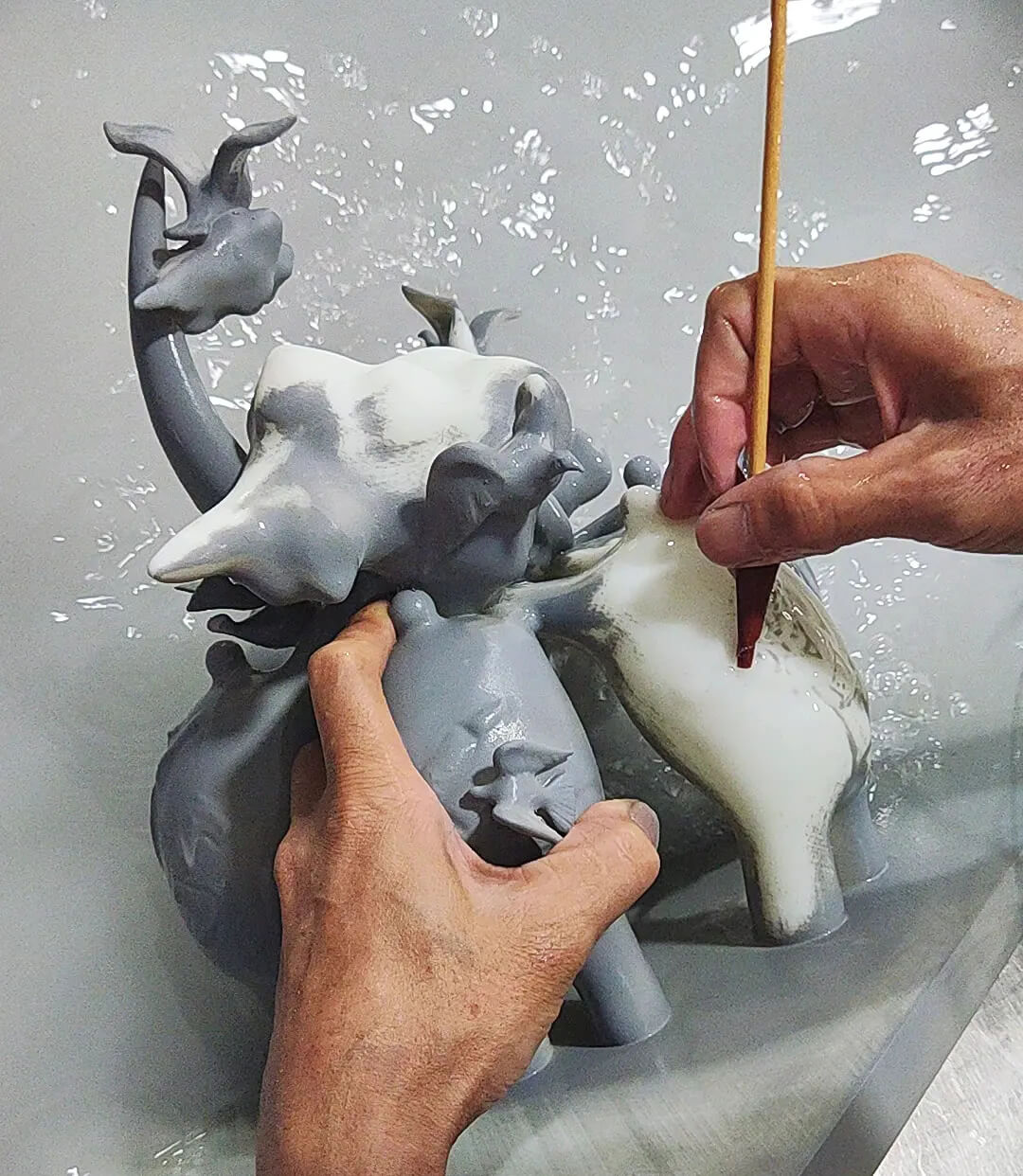

Ultrasonic Cleaner: Cleaning the 3D Printing Components
Ultrasonic cleaner is a reliable safe and effective method for removing the print residues of molds from the surface of 3D printing components. The components printed by 3D printing technology can take advantage of the ultrasonic cleaners to improve the cleaning and adjustment procedures after printing the components.
The 3D printer can print the very complicated and refined subjects, as well as the complex instruments and machines, but the premise is that there must be the special materials for 3D backing materials, so that the printing of such type can be possible.
The backing materials make the exquisite shape by 3D printer becomes possible, which can only be cast or fabricated with machine tools in the past. At last, when the components are printed successfully, the ultrasonic cleaners can help to remove the backing materials quickly and completely, so as to reduce the time for fabricating components, making good preparations for the next step of installation process or directly transporting them to the customers.
3D printing is a very effective method for constructing complex components, because they can design and fabricate quickly, starting from the computer-aided mapping to final accomplishment. Constructing a layer of thin component for one time by means of the plastics, metals or ink of printing head, and distributing them on the printing table in the form of objects.
At the beginning, when developing such process, 3D printing has a deficiency ——it cannot print the components with overhanging shelf, ledge or cavity, because they cannot be supported in printing. The utilization of backing materials can solve this problem, since it is a kind of material which can be dissolved in the ultrasonic cleaners easily.
The space, interval and holes below the printing head is filled with resin backing materials, and the rest parts at the same layer are filled with component materials. Making the finished product seems to be poured into the mold and formed (Imagining to fabricate a golf, the mold is a hollow globe with internal bulge, while the golf is a circle with concave pit. The golf cannot be fabricated without molds)
After the components are printed successfully, resin backing materials must be taken from the components. The ultrasonic cleaners are utilized for such purpose, though the hands or hot water spraying system can be utilized for cleaning, the operation is too low, which may possibly damage the components.
Putting the alkaline detergent, hot water and components into the ultrasonic cleaners together, the resin can be dissolved quickly. No manual work is required, though it is for the most inaccessible crack, aperture, blind holes or channels, the resin can be removed.
Considering the complexity of components fabricated by 3D printers, in fact, the ultrasonic cleaners are required for removing all the backing materials. The more complex the components are, it is more difficult to utilize the traditional method. Ultrasonic cleaning is an indispensable part during 3D printing process, which is almost the same important as the printer itself. No other machines can clean the concave troughs of components more quickly, completely and deeply like the ultrasonic cleaners.
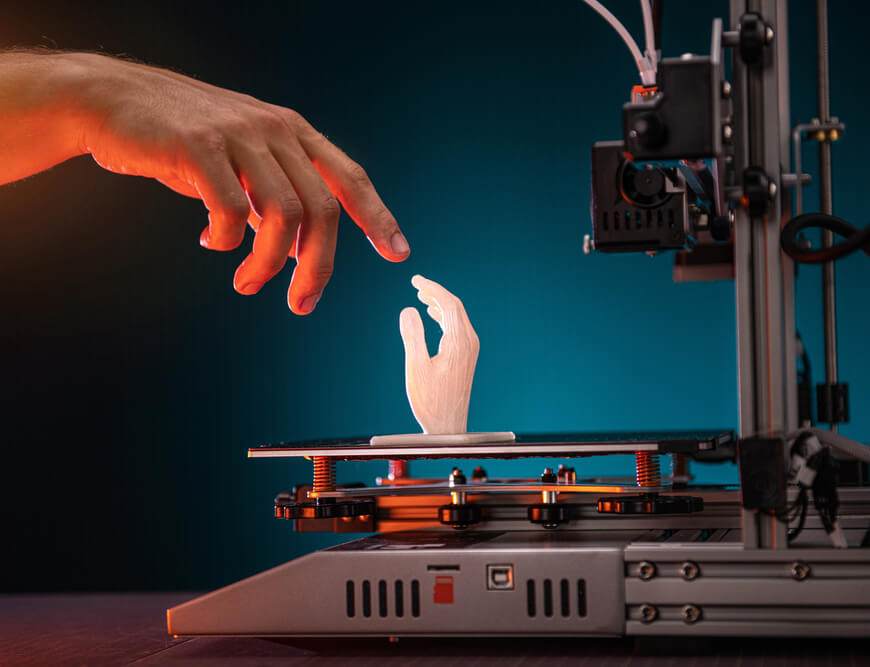

The Ultrasonic Cleaning Option for 3D Printing Products
The ultrasonic cleaning is extensively applied for removing the backing materials and other surface dirt on the 3D printing components. The reason for ultrasonic cleaner enjoys such popularity lies in its capability for cleaning the complex geometrical shapes that the traditional methods cannot realize.
The companies and lovers for applying 3D printing technology would use various kinds of plastics and resins, such as ABS, PLA, polyamide, polyamide filled with glasses, three-dimensional photoetching materials (epoxy resin), silver, titanium, steel, wax, photopolymers and polycarbonate.
For the previous technology, people have integrated two kinds of formable thermoplastic plastics formulas, for example, the ABS applied for the component itself and the PLA utilized for detachable backing materials, fabricating the highly complex structure quickly.
In such condition, the key to provide technology efficiency is to remove the PLA backing materials quickly and safely, without the risk for damaging ABS components. According to the fact, the ultrasonic cleaners are quicker, safer and more efficient than water spraying or manual work.
For the latest SLA (three-dimensional photoetching) and LFS (low-power three-dimensional photoetching) technologies, laser has been applied for constructing components, without the help of backing materials. The uncured resins on finished product can be better removed by ultrasonic cleaning.
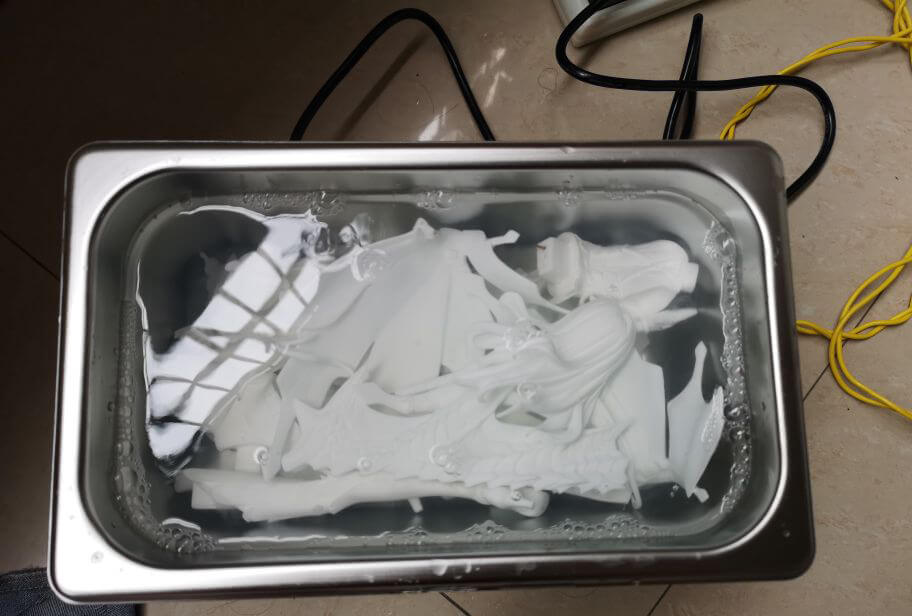

The advantages of ultrasonic cleaning
As for the advantages for applying medical ultrasonic cleaners for cleaning 3D printing components and other medical device, it can save time, reduce cost and improve the medical treatment effect for patients. Compared with other traditional cleaning methods such as soaking and wiping, the ultrasonic cleaning is quicker. Because only the water was utilized for ultrasonic cleaning, the disinfector or warmer detergent may also be utilized, thus the operation cost is very low.
When cleaning components and removing impurities from cracks, apertures and holes, there is less infection possibility for patients, and the success rate for medical procedure is higher. Obtaining ultrasonic cleaners from the suppliers with better reputation can make sure that they are equipped with the desired correct configurations and frequency, which can satisfy the requirements for medical application.
How to Eliminate Pollution by Ultrasonic Cleaning
The working principle for ultrasonic cleaning is to produce tiny cavitation bubbles in clean-out fluid. The bubbles are produced when the ultrasonic passing the fluid. If the bubbles are broken and lead the tiny but strong jet flow to the component surface to be cleaned. These ejectors will discharge the dirt and polluted objects to the bottom surface. The cleaning velocity is quick, the foreign substance can be removed completely.
For making sure that the dirt can be removed and the original surface can be intact, it is necessary to utilize correct ultrasonic frequency. The relatively low frequency is not suitable for the hard surfaces such as stainless steel and so on, while the relatively high frequency can provide warmer cleaning for the soft surfaces such as plastics and so on. When the correct frequency is utilized, the surface pollution can be removed from the components, and the original surface will be not influenced


The methods and procedures for cleaning 3D printing components
First of all, selecting a big enough for ultrasonic cleaning device to accommodate your 3D printing components, making them soak in the water completely. Some examples will be provided in this text later.
The Second Point is the Recipe for Clean-not Fluid
The recipes of clean-not fluid for removing backing materials/ or uncured resins can be different due to the different ingredients of materials being removed. For example, the detergent utilized as wetting agent containing high degree of alkalinity or caustic alkali. Once the recipe has been determined, there will be a rather standard procedure for removing the backing materials according to the recipe description.
1. Utilizing the flammable solvents in beaker for cleaning small components
This may be the most practical solution for cleaning the relatively small components utilizing IPA and other volatile solvents (such as jewels, dental implants and so on). The traditional desktop ultrasonic cleaners were utilized, such as 40Khz Granbosonic.
You can use the tap water with surface active agent, dripping several drops of dishwashing liquid in the ultrasonic cleaning trough. Before beginning, operating the cleaners for about 10 minutes to conduct degasification on the solution without any load.
Placing the ultrasonic cleaners at the well-ventilated place, putting the components beakers cautiously, and adding enough solution to make sure that they were completely soaked. About 1 to 2 inches of the beaker bottom should be soaked in the water. The ultrasonic energy will penetrate the glass walls and produce cavitation effect in solution, so as to clean your components.
In the end, picking out the components after drying cautiously
2. Utilizing the specialized anti-explosion ultrasonic cleaners
As for large scale of operation requirements, providing 2, 4, 6, 9 and 33 gallons of anti-explosion ultrasonic cleaning device. These designs can be applied for IPA and other low-flash volatile cleaning solvent to clean the 3D printing products.
Matters Need Attention for Ultrasonic Cleaning and Heating
When utilizing the ultrasonic cleaning under cavitation effect, it will produce heat, resulting in the evaporation of solvent. Such problems can be controlled by means of installing cooling coil in the relatively small desktop device.
